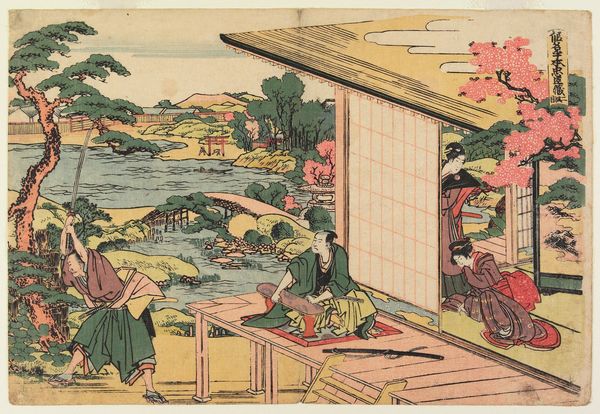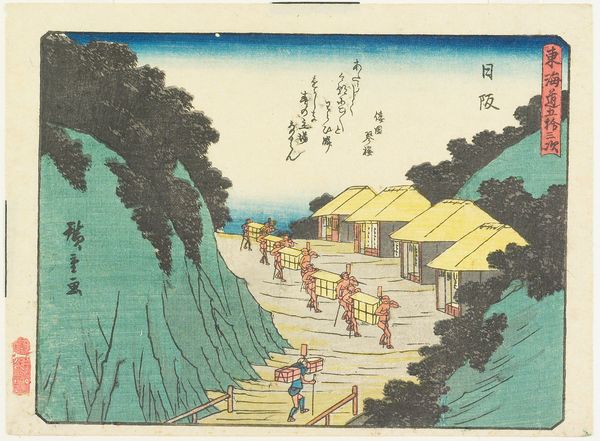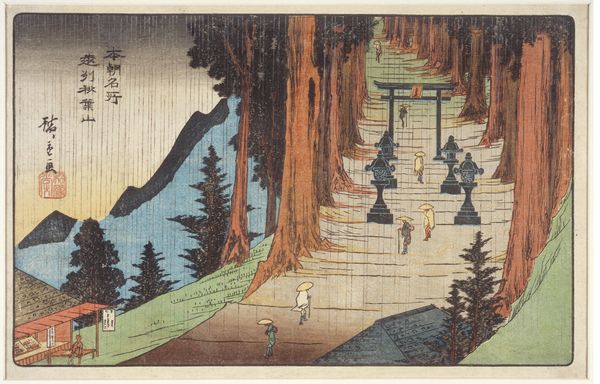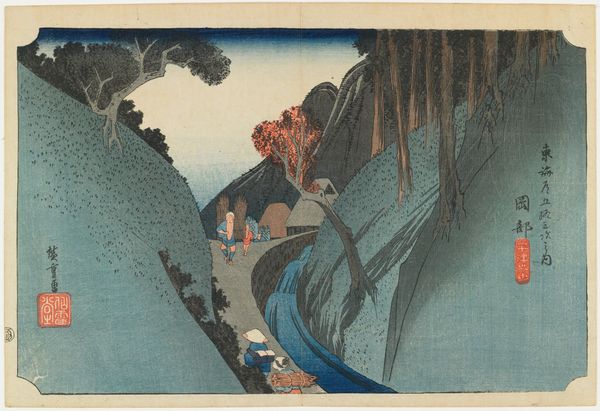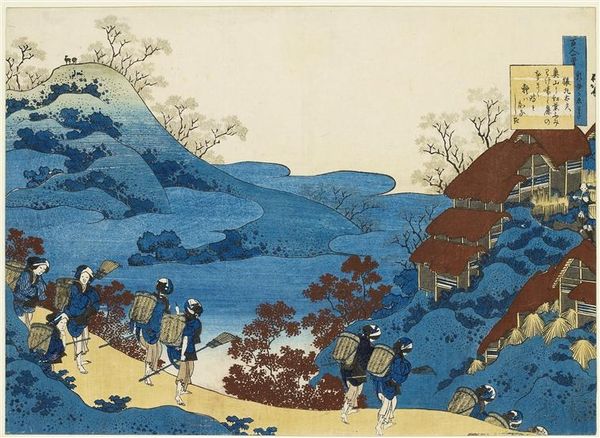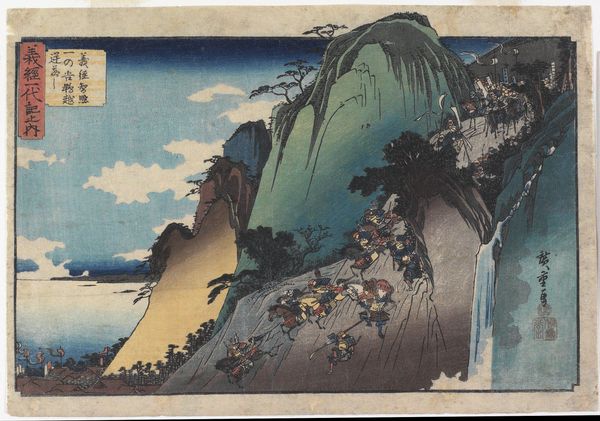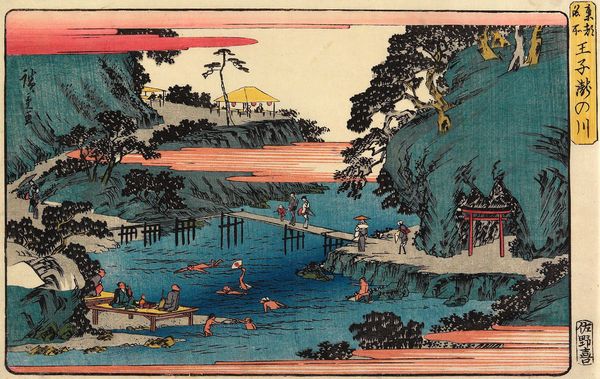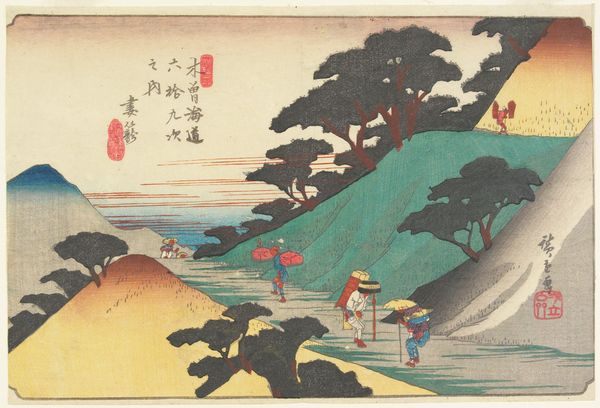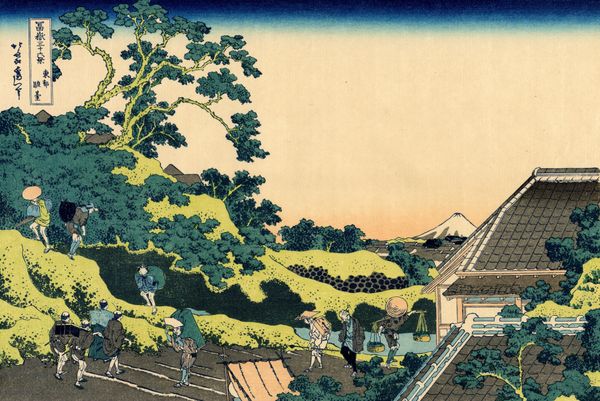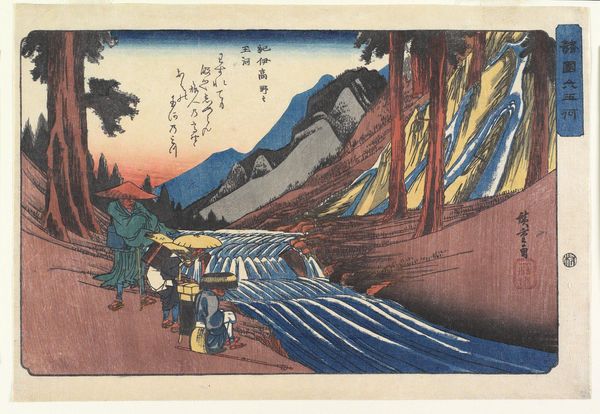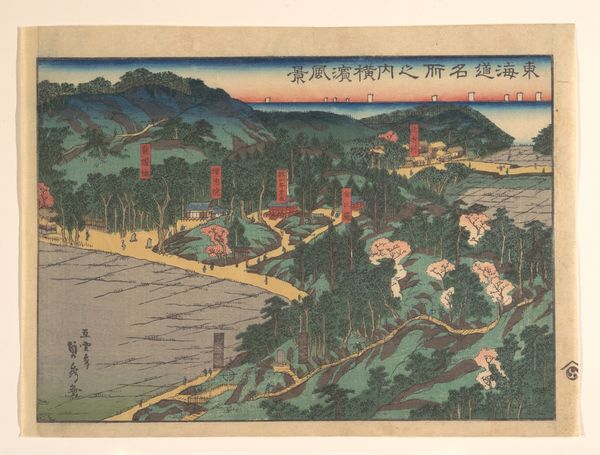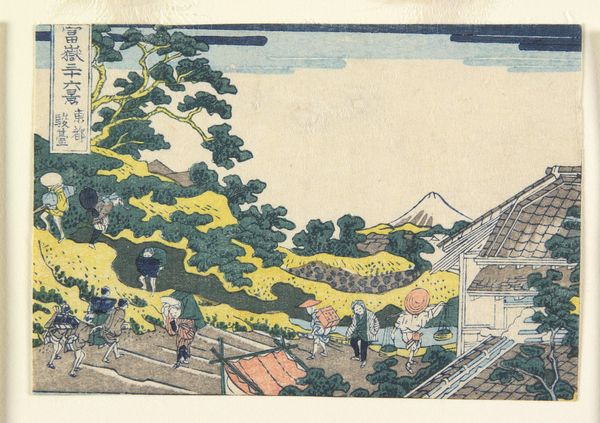
print, woodblock-print
# print
#
asian-art
#
landscape
#
ukiyo-e
#
woodblock-print
#
orientalism
#
genre-painting
Dimensions: 8 3/4 × 13 15/16 in. (22.3 × 35.4 cm) (image, horizontal ōban)
Copyright: Public Domain
Editor: This is “No. 39,” a woodblock print by Utagawa Hiroshige, made around 1835 to 1838. It feels incredibly detailed for a print – almost photographic in its rendering of the waterfall. I’m curious, what strikes you most about it? Curator: Immediately, I'm drawn to the labor embedded within this seemingly idyllic landscape. Consider the woodblock printing process itself – the carving, the inking, the layering of colours, each demanding meticulous, skilled work. Ukiyo-e prints were not simply "art"; they were commodities produced by workshops, distributed widely, and consumed by a burgeoning urban middle class. What can you tell me about the figures depicted? Editor: I see people traveling across a bridge. One figure has straw bundles on their back. Are those supplies being delivered somewhere? Curator: Precisely! Notice the material reality of their journey. What does their labor tell us? These details aren't incidental. This print depicts the everyday economy: a vibrant circulation of goods and people, fueled by labour, through landscapes reshaped by human needs and desires. The waterfall might be awe-inspiring, but the human element is really what sells this kind of piece, don't you think? Editor: I suppose I hadn't considered that angle. So, even within something seemingly "beautiful" like a landscape, we can see a whole system of production and consumption at play. I learned a lot just by focusing on who is making it and what they were making! Curator: Exactly! It’s about seeing the artwork not just as an isolated aesthetic object, but as a node within a web of social and material relations. I'll remember to see art within historical processes now!
Comments
No comments
Be the first to comment and join the conversation on the ultimate creative platform.
